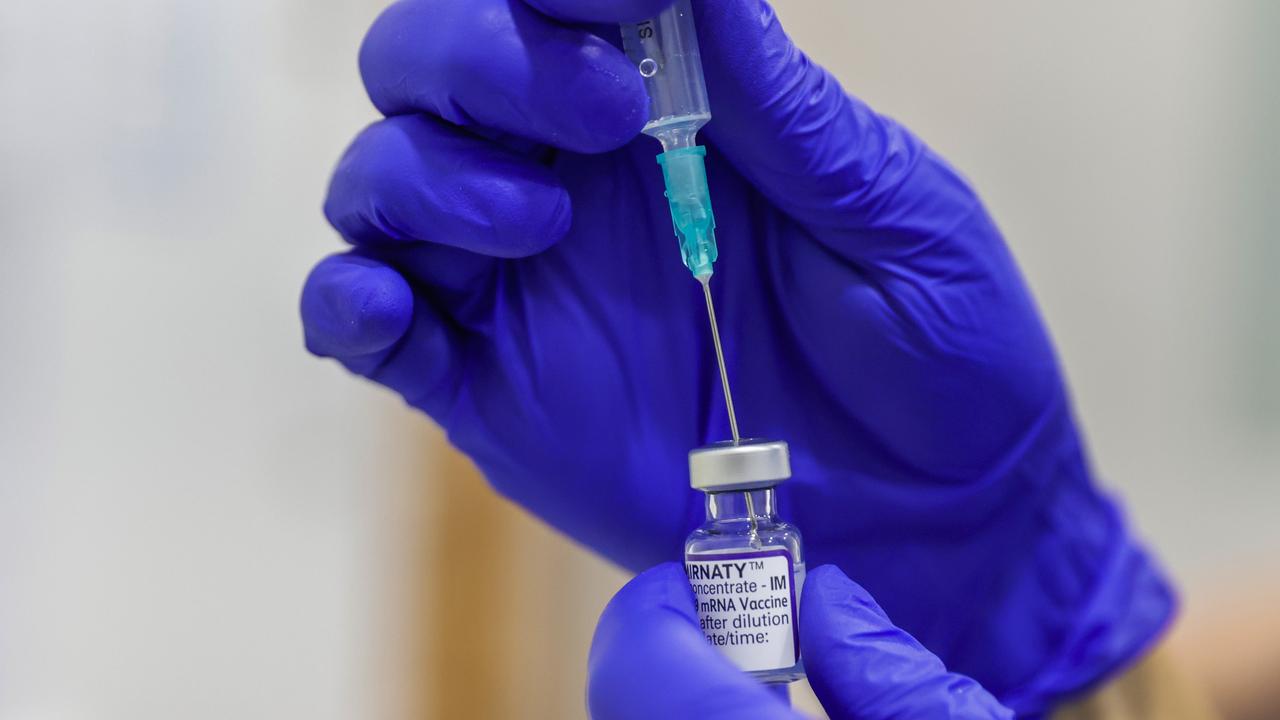Nick Coatsworth says worst Covid Omicron predictions are inaccurate
One of Australia’s former top Covid doctors says the emerging data on the Omicron variant is encouraging and believes the worst modelling will not be true.
NSW Coronavirus News
Don't miss out on the headlines from NSW Coronavirus News. Followed categories will be added to My News.
Preliminary data on the Omicron strain is “encouraging” as experts hit out at sections of the scientific community peddling concerning predictions.
It comes as Premier Dominic Perrottet revealed on Monday that 26 of the 33 Covid cases in intensive care were unvaccinated people.
Infectious diseases specialist Dr Nick Coatsworth – Australia’s former deputy chief medical officer – said he doesn’t believe predictions of 25,000 cases a day were “accurate”.
“The people who are most worried about this in the scientific community were saying its early days four weeks ago and are still saying this. And both can’t be true,” he said.
“We have got some emerging data and all the emerging data is encouraging – all of it. The only thing that is not encouraging is how infectious it (Omicron) is.”
His comments came after clinical immunologist Dr Dan Suan made a 17-minute Facebook video saying NSW was “sleepwalking into an Omicron disaster”.
Among the positive data are figures from South Africa which show 28,000 positive Omicron cases and the hospitalisation rate was almost 30 per cent lower than that from Delta. Despite only 31 per cent of the population being fully vaccinated, just 1.7 per cent of identified Covid-19 cases were admitted to hospital in the second week of infections in the current wave, compared with 19 per cent in the same week of the third Delta-driven wave.

Dr Coatsworth said he expects cases to “rise quickly” but NSW will have a “lower (number) than we expected”.
“People who take Dan’s position believe that the peak will be enormous. UNSW modelling says 25,000 a day, I just don’t think that’s accurate,” he said.
He said NSW was in a beneficial position because of world-leading vaccination rates and a population that still has relatively high levels of immunity.
“The key period will be the next seven days. We will be able to see how many of the 2500 odd testing positive every day are actually going into hospital,” he said. The UK had almost 25,000 cases as of December 19 but just 85 people in hospital and seven deaths.
But restrictions may be on the cards with the hospitalisation rate spiking in London.
Virologist Professor Tony Cunningham said the UK’s spike in hospitalisations could be attributed to an older population compared to South Africa, where the variant emerged, which only saw mild disease with Omicron.
“We know age is the greatest predisposing factor to severe disease. The more you have an ageing population, the more at risk you’ll be. We saw this in original issues in Italy with intergenerational families,” he said.
He said it was difficult to interpret NSW’s own 15 per cent surge in hospitalisations in the past 24 hours because it was caused by a combination of Delta and Omicron. “If it’s a mix of Delta and Omicron, you’ll see at least some upswing in hospitalisations.”




